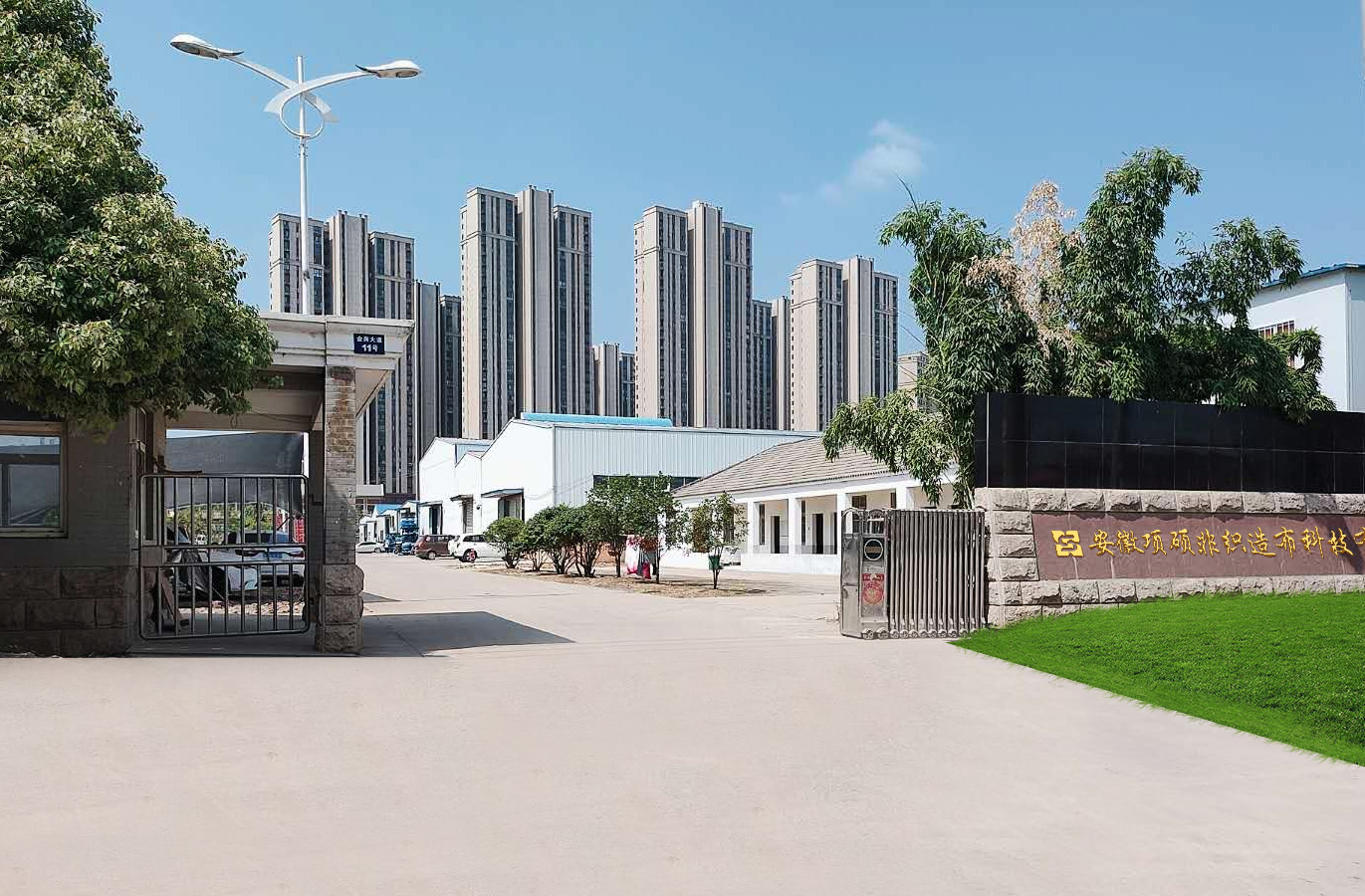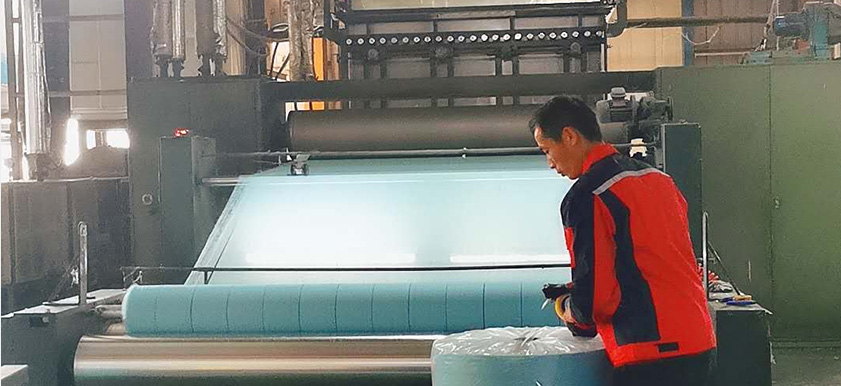

Anhui Xiangshuo Nonwoven Technology Co., Ltd. is located in Wushan Town, Changfeng County, Hefei City, Anhui Province, near Jiangsu, Zhejiang and Shanghai, with convenient transportation and an area of 42 acres. The company was established in July 2019 with a registered capital of 10 million yuan. Committed to the development and production of environmentally friendly nonwoven consumables, it is an emerging production-oriented enterprise with complete equipment and strong technical force, and was rated as a key investment attraction enterprise in Hefei Xinqiao Industrial Zone. The company currently has production lines for PP nonwoven fabrics and polypropylene spunbond nonwoven fabrics, with a width of 1.8 meters to 3.2 meters and a grammage of 9 to 250 g / m². The product has the characteristics of flame-retardant, anti-aging, anti-static, acid and alkali resistance, non-toxic, non-pollution, degradable and other environmentally friendly products. The main scope of our company's experience: R & D, production and sales of non-woven fabrics, non-woven products, and new materials for non-woven fabrics; manufacturing and sales of chemical fiber equipment and non-woven fabric equipment; R & D, production and sales of plastic masterbatch functional master batches; R & D, production and sales of supplies; R & D, production and sales of PE woven tarpaulins, furniture covers, plastic nets, trash cans, and plastic houses.
We always adhere to the principle of "survive by quality, develop by integrity", further improve the management level of the enterprise, achieve the development goals of the enterprise, and strive to become a continuous leader in the industry.
Founder Mr. Xiangxian Jun has 18 years of rich experience in China's non-woven fabric industry. He has developed customers in most parts of the country and overseas markets.
We always adhere to the principle of "survive by quality, develop by integrity", strictly control product quality in production, and always adhere to integrity-based operation.
The company is committed to the development and production of environmentally friendly nonwoven consumables. It is a production-oriented enterprise with complete equipment and strong...




Seedling cultivation, breathable heat preservation and moisturizing, insect control, grass and frost resistance, UV resistance

Filter materials, insulation materials, cement packaging bags, garden warmth, etc.

Surgical gowns, protective clothing, disinfection bags, disposable surgical mattresses, masks, etc.

Sanitary napkins, sanitary pads, diapers, wipes, beauty products, etc.

Furniture covers, non-woven wallpaper, table cloth, etc.

Lining, adhesive lining, non-woven suits, shoes, bags, etc.
What are the production techniques of spun-bonded non-woven fabric?Spun-bonded non-woven fabric are made by extruding and stretching the polymer to form a continuous filament, then laying the filament into a web, and then making the web into a nonwoven fabric by self-bonding, thermal bonding, chemical bonding, or mechanical reinforcement. Spun-bonded non-woven fabric has good resistance to high temperature and low temperature. Polypropylene can be used for a long time at 150, polyester can be used for a long time at 260. It has the advantages of aging resistance, UV resistance, high elongation, good stability and air permeability, corrosion resistance, sound insulation, mothproof, non-toxic and so on.The main products of spun-bonded non-woven fabrics are polypropylene and polyester (long fiber and short fiber) non-woven fabrics. Common and commonly used applications are non-woven bags, non-woven packaging and so on. Spunbonded nonwovens are easy to identify and generally have good bidirectional fastness. Usually the winding point of spunbonded nonwovens is diamond shaped. On the application level, it can also be used as flower packaging cloth, luggage cloth, etc. Its wear-resistant, strong feel and other characteristics make it an ideal choice for making such products.Anhui Xiangshuo Nonwovens Technology Co., Ltd. is located in Wushan Town, Changfeng County, Hefei City, Anhui Province, near Jiangsu, Zhejiang and Shanghai, convenient transportation, covers an area of 42 acres, the company was established in July 2019, the registered capital of 10 million yuan. Committed to the development and production of environmentally friendly non-woven consumable products, it is an emerging production-oriented enterprise with complete equipment and strong technical force, and was rated as a key investment attracting enterprise in Hefei Xinqiao Industrial Zone. The company currently has PP non-woven and polypropylene spunbonded non-woven production lines, width 1.8m - 3.2m, gram weight 9-250g /m. The product has the characteristics of flame retardant, anti-aging, anti-static, acid-alkaline, non-toxic, pollution-free, degradable and other green environmental protection products. The main business scope of our company: non-woven fabrics, non-woven products, non-woven new materials research and development, production and sales; Chemical fiber equipment, non-woven equipment manufacturing, sales; Plastic masterbatch functional masterbatch development, production and sales; Research and development, production and sales of outdoor products; PE woven tarpaulin, furniture covers, plastic nets, trash cans, plastic greenhouse research and development, production and sales.
MORE+As the deadline for Trump to suspend the so-called "reciprocal tariffs" approaches, exports from several Asian economies to the United States have soared, thereby causing the trade deficit between the United States and the Asian region to continue to expand.On June 23rd, it was reported that Vietnam, Thailand, Taiwan of China and South Korea all set or approached new export records to the United States in May, indicating that enterprises are racing against time to deliver goods to the United States to avoid possible high tariffs.This round of export surge is expected to be reflected in the US trade data for May this week. The market predicts that the US trade deficit in May will reach 91 billion US dollars, pushing the total deficit so far in 2025 to approach 643 billion US dollars, far exceeding the historical record for the same period.Some analyses point out that if Trump imposes historically high tariffs on Asian economies in early July, the current surge in exports may reverse rapidly, thereby impacting the economic growth of the entire region. Apec has lowered its GDP growth forecast for this year from 3.3% in March to 2.6% due to trade tensions.Exports of major Asian economies have seen record growthIt is reported that according to the data released in the past few weeks, Vietnam, Taiwan of China and Thailand's exports to the United States all reached record highs in May. Among them, Vietnam and Thailand's exports to the United States soared by 35% year-on-year, and Taiwan's exports to the United States even soared by nearly 90%.It is worth noting that South Korea's exports to the United States in May were also close to record levels. In addition, customs data released on Monday showed that South Korea's exports in the first 20 days of June increased by 8.3% year-on-year, among which exports to the United States rose by 4.3%.The significant growth pattern of Asian economies' exports to the United States has overturned the historical pattern.Under normal circumstances, Asian suppliers will increase their exports to the United States before the end of the year to prepare for the Christmas holiday, making trade more active in the second half of the year. However, the threat of new tariffs that may be implemented in early July forces enterprises to ship goods to the United States as soon as possible.Declaration: The content of this article is compiled from the Internet and the copyright belongs to the original author. If there is any infringement, please inform us in time and contact us for deletion.
MORE+Spunbond nonwoven fabric, as an important member of the nonwoven fabric family, plays an indispensable role in daily life and industrial production. At present, most non-woven fabrics on the market are produced by spunbonding, which fully demonstrates their wide application.From the perspective of raw materials, Spunbond nonwoven fabrics mainly take polyester and polypropylene as the "cornerstone". Polyester has the characteristics of high strength, good elasticity and wear resistance, while polypropylene has the advantages of light weight, heat preservation and acid and alkali resistance. These properties endow spunbond nonwoven fabrics with excellent physical properties.The product types of Spunbond nonwoven fabrics are rich and diverse, mainly including polypropylene and polyester (long fiber, short fiber) nonwoven fabrics. These different types of products shine in their respective fields. In daily life, the most common and frequently used spunbond non-woven fabric products are non-woven fabric bags and non-woven fabric packaging. Non-woven bags, with their characteristics of being environmentally friendly, durable and reusable, have gradually replaced traditional plastic bags and become a popular choice for people when shopping. Non-woven fabric packaging is widely used in the packaging of various commodities. It can not only protect the commodities but also has a certain degree of aesthetic appeal.There are also some tips when identifying Spunbond nonwoven fabrics. Generally speaking, spunbond nonwoven fabric has good bidirectional fastness, which means it has high strength in both horizontal and vertical directions and is not easy to tear. In addition, the crimping points of spunbond nonwoven fabric are usually rhombic, which is a unique mark left by its production process. By observing the shape of the crimping points, we can relatively easily identify spunbond nonwoven fabrics.With the continuous advancement of technology and people's pursuit of environmental protection and quality, the application fields of spunbond nonwoven fabrics are still expanding. In the future, it is expected to play a greater role in multiple fields such as medical care, health, agriculture and construction, bringing more convenience and surprises to our lives.The main experience scope of Anhui Xiangshuo Nonwoven Fabric Technology Co., Ltd. includes the research and development, production and sales of nonwoven fabrics, nonwoven fabric products and new nonwoven fabric materials. Manufacturing and sales of chemical fiber equipment and non-woven fabric equipment; Research and development, production and sales of plastic masterbatch functional masterbatch; Research and development, production and sales of outdoor products Research and development, production and sales of PE woven tarpaulins, furniture covers, plastic nets, trash cans and plastic flower houses.
MORE+